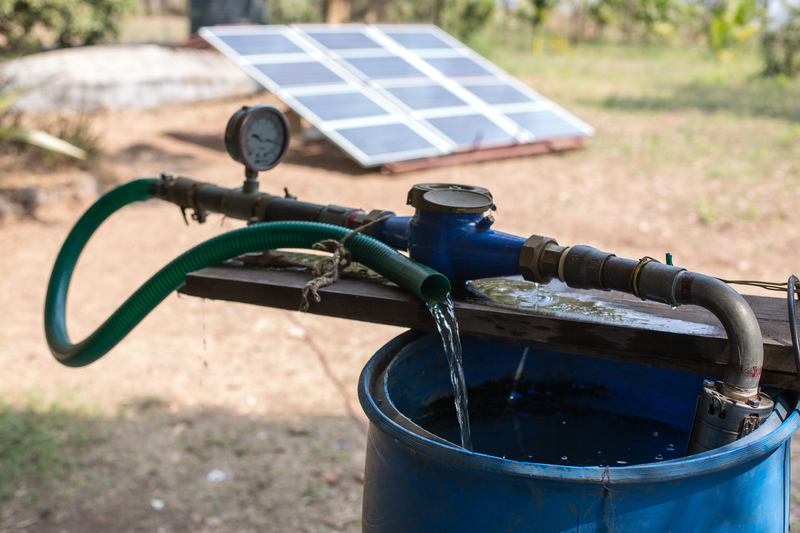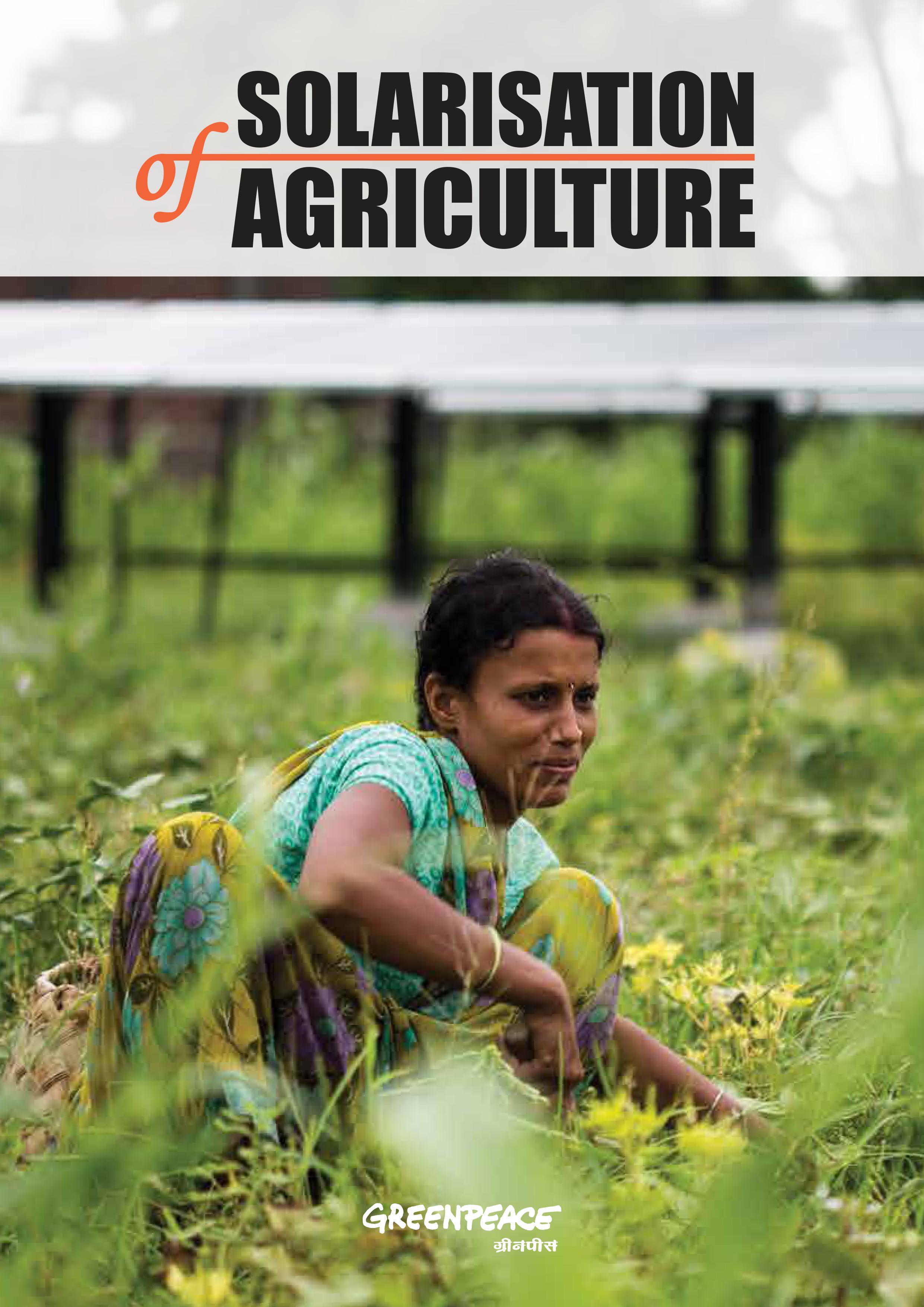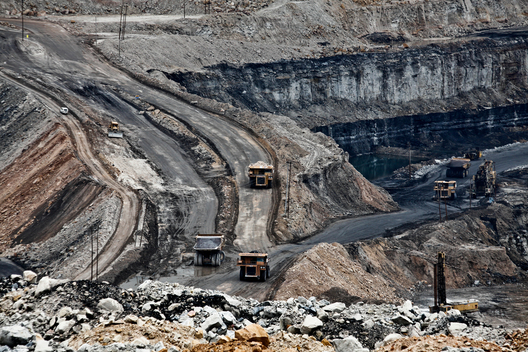In simple words, net metering allows consumers with solar energy systems to be paid for the electricity that they add to the grid. When solar pumps are net metered, aka connected to the grid, the farmer has a meter from the DISCOMs (Electricity Distribution Companies of India) which keeps track of how much electricity they are sending back to the grid (called evacuating), after using it for irrigating their fields. With this information, farmer knows how much electricity they are using for irrigating the fields and how much they are exporting to the grid. This results in farmer managing their irrigation efficiently and earning some additional money as well.
As farmers do not receive reliable electricity supply, in some cases they tend to keep the water pumps running such that when electricity is supplied, the fields are automatically irrigated. However, this results in overflows and use of excess water. In case of solar pumps that are net metered, farmers have the incentive of not leaving the pumps on, more than necessary while also making revenue exporting the electricity back to the DISCOMs.
- Provide high-quality day time power:
One of the banes of a farmer’s existence is the lack of reliable daytime electricity. This can easily be addressed through high quality solar pumps that provide farmers with power during the day. Since the pumps are net-metered, farmers have the option of drawing power from the grid in case of an excessively cloudy day or when the pumps are down due to technical issues. This will insulate the farmer from any risks associated with electricity downtimes. Additionally, when the fields do not need irrigation, the solar array from pumps can feed power into the grid.
- Additional Income for Farmers:
Net metered pumps not only cater to the farmers’ own consumption, but when sized adequately, can result in excess power that can be fed into the grid. Consequently, farmers can earn money for the power injected into the grid, quite similar to the rooftop net-metering scheme. The size of the solar system in relation to the pump capacity can be decided by State Governments based on their policies.
- Reduction of Subsidy Burden on State Government and Cross Subsidy on DisComs:
Electricity supply for the agricultural sector is either free or priced nominally. While the price of power procurement has gone up over time, cost of power supply to farmers has not reflected this trend. This has resulted in two things: 1) increase in the extent of State Government Subsidy often disbursed to the DisComs via the annual tariff petition process and 2) increase in the cross subsidy from the industrial and commercial segments. Whereas once implemented, solar pumps can provide energy independence to farmers and sever their dependence on subsidies.
Additionally, no running fuel cost, as is the case for diesel pumps, is another economic benefit to farmers. Therefore, net-metered solar pumps have the potential to turn around the power sector in India.
- Reduction in exploitation of underground water:
One of the concerns from providing high-quality, round-the-clock grid power to farmers is the over-exploitation of groundwater. There is ample evidence to suggest a strong correlation between subsidized energy access and groundwater exploitation. As solar pumps provide high quality electricity supply or irrigation purposes during daytime, this also incentivises farmers to use water efficiently and divert power into the grid in order to earn additional revenue. Though this choice depends upon several factors such as the quantum of incentive, season and market price of the crops being grown. However for the first time, farmers could have the ability to make a choice.
However, like nothing in the world is a perfect solution. Net-metered solar pumps have its own caveats that need to be taken care of to fully benefit from them.
- Quality of Solar Pumps and Maintenance:
One of the biggest concerns with solar irrigation pumps is the quality of solar equipment (modules, inverters, structures and other components) deployed in the field. India’s experience with distributed highly subsidized rooftop solar systems shows that some, if not all, installers of solar systems compromise on quality. There are concerns that lower quality systems will not last for ten years when the stated lifetime of a solar system is usually over 20 years. These concerns are valid and must be addressed through stringent quality control. All schemes and policies must ensure real-time monitoring of systems. Secondly, installers must ensure support through a maintenance contract. Payments to the suppliers should be time-based and linked to the generation of solar systems.
- Getting farmers on board:
If farmers should have the option of exporting energy onto the grid during the day, the grid must be kept on in order to facilitate this flow of energy. Even if one farmer, among a group of farmers connected to a single feeder, opts for the farm-top scheme, then the distribution company would be obliged to leave the grid ON during the day. This would fundamentally change the manner in which power is managed at the moment. It might also reverse any incentive for the remaining farmers to co-opt for the scheme, since they would now be receiving uninterrupted day time power supply via the grid. One way, to solve this is to adopt a cooperative model, where farmers would be required to come together as a group. Gujarat, for instance, is experimenting with the idea of having a minimum number of farmers accepting the scheme before which the feeder could be turned on. However, this approach is fraught with complications and access issues for individual farmers.
Pujarini Sen is a Climate and Energy campaigner at Greenpeace India.

From sunlight to a clean energy efficient farming for securing a sustainable energy future for India!
Get Involved


